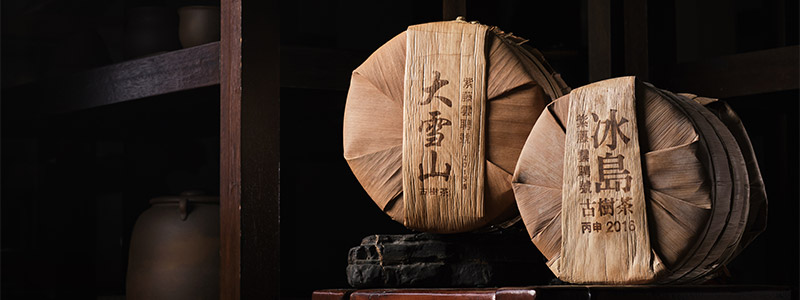Hooi Yoke Lien Blog
Storing Young Puer Tea At Home
< Return
Puer traditionally begins as a raw product known as sun-wilted raw tea, or shai qing maocha. These are unfermented tealeaves that have gone through fixation, rolling and sun-drying after being picked fresh. They are then steamed and compressed into various forms, including tea cakes, tuocha and tea bricks. Raw Puer may benefit from extended storage and age to maturity. With the right conditions and duration, raw puer will transform into a rich, smooth and mellow tea typical of ‘vintage’ teas.
Where should Puer be stored? It depends. A collector, a merchant or a family may store it differently because of circumstances; the quantity may require different arrangement, too. This article highlights the impact of the environment on the storage of young Puer tea, namely that of temperature, humidity, oxygen, light and odour.
A) Temperature and humidity: ageing of Puer tea should not be realized at too high or too low a temperature. By the same token, the tea does not fare well if the moisture content in the air is too high or too low. As a general rule, a temperature and relative humidity that we normally feel comfortable at would be suitable for Puer, say between 20°C and 30°C and around 70% respectively, which means that Malaysia has the right conditions for the storage of Puer.
B) Odour: Where possible, keep Puer in a store room for tea, or a space or a cupboard for storing Puer alone. This helps seal out the odour from other objects. Cooking smell from the kitchen, artificial fragrance emitted by toiletry items, or musty smell in the air are common in one’s home; we just have to keep Puer separately.
C) Light: Avoid exposing Puer to sunlight. Store it away from any direct source of light. Puer needs to be kept in cool, shaded places – its quality will deteriorate once it has been exposed to light source. Puer loses its vibrancy under the heat from sunlight and lighting devices. Keep Puer out of the light’s way, or risk having your tea becoming ‘flat’ in the long run.
D) Oxygen: Puer needs air flow. Having said that, there should not be an overly free flow of air as the tea requires a certain level of oxygen and moisture in the environment to facilitate ageing. For example, it can be kept in a small, uncluttered room. Keep the door close; leave it open a few times only in a month for some air exchange to ensure the tea’s vibrancy.
E) Container: For bigger quantity, follow the original form of packaging – wrap each tea cake with a piece of soft cotton paper, bundle every seven tea cakes into a stack with thick brown paper or dried bamboo leaves, and store the stacks of tea in a clean, odour-free card board box.
If there are just a few pieces of tea cakes to be stored, keep them in their original packaging and card board box. Paper packaging that has any trace of odour should be replaced promptly by good quality, odour-free soft cotton paper or clean envelopes. Wrap tea cakes individually; this way, the smell will not permeate through.
For Puer intended for occasional consumption and short-term storage, break Puer tea cakes into loose form and keep them in a purple clay or ceramic tea jar. Puer kept in such porous jars tends to age to maturity faster.
By: Hooi Yoke Lien